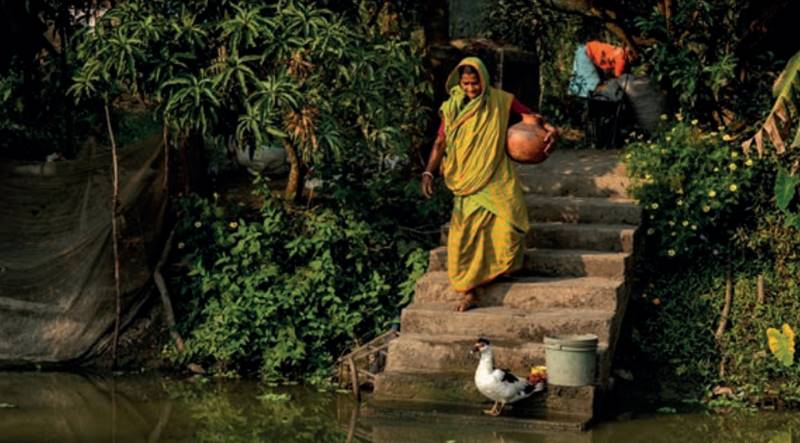India is the 48th most water-vulnerable country among 181 countries of the world. About 10 per cent of the country’s total population does not have a basic water facility near their homes, says a recent report by WaterAid.
“Around the world, one in ten people – that’s 785 million people – do not have even the most basic source of clean water, and 2.2 billion do not have their own tap or pump that provides a reliable source of water to drink,” reads the report, Turn the tide: The state of the world’s water 2021.
Also Read: The long walk for potable water in Bangladesh
The report goes on to note that as per the World Health Organization (WHO), a minimum of 50 litres of water per person per day is needed to meet basic drinking, cooking and washing needs. “So, a woman responsible for fetching the water for a family of four, whose walk for water is a half hour round trip with a 20 litre jerry can, would spend five hours a day just fetching water. Or the equivalent of two and a half months per year.”

According to the WaterAid report, climate change is linked to flooding and rising sea levels that pollute fresh water sources and ‘contaminate underground water reservoirs with salt, rendering them undrinkable’. The report underlines the inability of the world’s poorest communities to access clean drinking water. This is responsible for the cycle of poverty and deprivation which is a living reality for almost half of the world’s population.
Also Read: In Deep Waters — Is climate change impacting the reproductive health of women in coastal Bangladesh?
People from the poorest communities around the world have to walk miles to get water – which is often dirty, and spend a considerable time recovering from illness which keeps them from accessing education, resulting in a vicious cycle of poverty.
“This perpetuates a vicious cycle of poverty, depriving people of educational opportunities and the time needed to make a living. Every minute spent fetching water is a minute not available for building a better future,” the report said.
Remarking about India, the report also said, “Due to the melting of the Himalayan glaciers and changes to the monsoon season – which is predicted to bring increased rainfall in the future – India is very vulnerable to the impacts of climate change.”
“The country’s more than 7,500 square km of coastline is at high risk of sea-level rise related to climate change, with sea levels along the Indian coast having risen by 8.5cm during the past 50 years,” it added.
Citing reasons behind the water-deprivation of certain communities around the world, the WaterAid report said: “While access to safe water is a human right and an ambition of the United Nations’ sustainable development goals, political, social and economic factors, impact on how likely someone is to have access to it. Social groups who are marginalised based on their gender, ethnicity, disability, caste and religion are often less likely to have access to safe water.”
For the girls and women tasked with fetching water, having to walk further to find a clean water source takes time away from their education and disproportionately impacts on their lives.
Last year, a Gaon Connection Insight’s survey revealed that almost 40 per cent women in rural India worked harder to fetch water during the lockdowns resulting from COVID19.


















